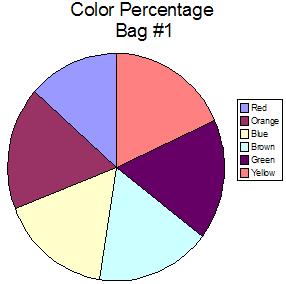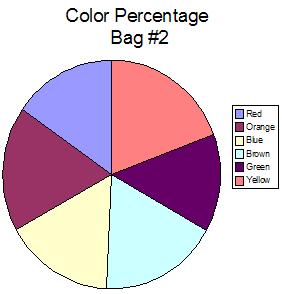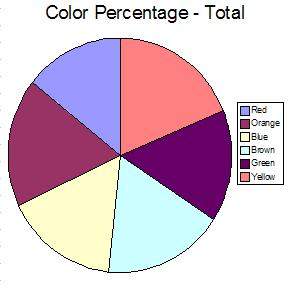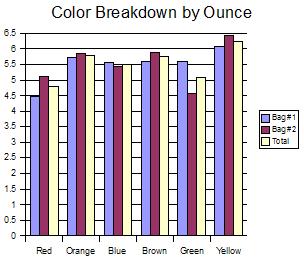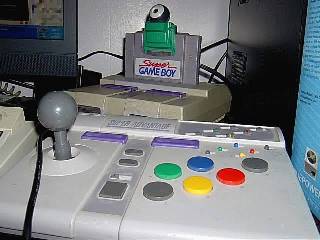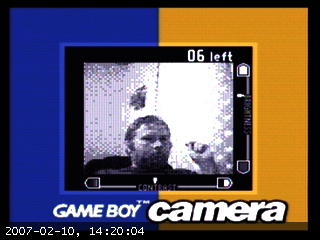Another year is down, and what a year it was. As is the January Tradition absolutely everywhere, let’s run down some of the events of the past year.
Best Game of 2006 That I Had a Hand In
As you may or may not be aware, I spent a good chunk of 2006 employed with Left Field Productions and while I was there we completed World Series of Poker: Tournament of Champions, the PSP port of MTX Mototrax, and Dave Mirra BMX Challenge. The Left Field crew is fantastically talented and just a great group to work with, and them allowing me to break into the industry and experience game development firsthand was certainly the highlight of my year and something that I will always be grateful for.
E3
One of the side effects of me working for a game developer was gratis admission to the final E3. Of course, we didn’t know it was the final E3 until months afterward. The event itself was pretty incredible, and I was actually thankful that I didn’t decide to write up the news for this (or any other) site. I walked by the 1up booth a few times and the people inside looked absolutely haggard, even on day 1.
I know I didn’t see everything, even though I was there for two of the three days. I can see, though, why the decision was made to radically alter the format of the show for next year. As neat as it was to see Tony Hawk on a half-pipe in the middle of one of the halls, Sinbad eating lunch, and Adam Sessler taking a coffee break, I can’t see how that enticed the businesspeople to buy more copies of Game X for the holiday season. In fact, there were so many non-business and non-press people there that seeing someone sitting down to take notes on his laptop or (attempting to) conduct a business meeting was like seeing Bigfoot copulating with the Loch Ness monster.
Some of my E3 Highlights:
- Celebrity Spotting
- Kentia Hall
- The history of video games exhibit
- Theseus
- The booth operator of Monster and Me playing the game instead of actually talking to anyone. To be fair, I was the only one at the booth.
- All of the other fantastic Korean and Chinese games that will (likely) never see any kind of release in the US.
The Release of the PS3 and Wii
The people camped out for days, the eBay auctions, the shortages, the shootings… No doubt about it, the anticipation for the two consoles was high. Some of the games on the PS3 look absolutely amazing, and the Wii is living up to my expectations of being a “GameCube 1.5″. I’m definitely looking forward to the coming year to see what these two consoles are going to be capable of.
Bully comes out
To no huge surprise Bully, the very anticipated game from Rockstar North (beware, ridiculously obtuse Flash site), finally came out, but not without its share of controversy. Way too much to go into here, but I will say that shortly after its release I was at my local Best Buy and an employee told me that the game was “Just like Harry Potter, but without the magic.”
Spike TV’s VGAs
Once again Spike TV tries to cash in on the video game ‘craze’ by concocting a couple of hours tripe loaded with tired old jokes, too much ‘attitude’, and very little respect to the industry. As good as The Godfater, Scarface, The Sopranos, and Family Guy games allegedly are, I’m amazed that at least one of them was nominated for nearly every ‘award': Best Game Based on a Movie or TV Show, Best Performance by a Human – Male, Best Male Supporting, Best Performance by a Human – Female, Best Female Supporting, Best Cast. Nintendo’s systems didn’t have too many games nominated for much, but Princess Peach was nominated for Cyber Vixen of the Year (and lost, shockingly). They tried to get some ‘street cred’ by having an award for Best Classic Game, but their criteria for a ‘classic’ game seems to be: An arcade game published by Namco between 1980 and 1983… and Centipede.
I realize that the VGA’s aren’t for me, and there were some reasonably entertaining moments, but when Peter Jackson’s King Kong: The Official Game of the Movie can take so many awards immediately after being released something might be suspect.
My first experience with SLI
Mid-2006 was the time that I decided to upgrade the old computerbox. I had finally reached the point that if I wanted to upgrade one piece, I’d have to upgrade all the pieces. So, I decided to try out nVidia’s multi-GPU solution, SLI. In a nutshell, SLI lets me put two video cards in my system and when I’m doing something that requires 3D, like playing a game, the cards will work in tandem to draw the scenes. The cards I chose were the XFX GeForce 7600GS Xtreme Edition. I haven’t really bought any games recently that stress the cards, but I can get about 400 frames per second in Quake III.
Steam sucks
Because I just plain don’t like the idea behind Steam, I never actually got around to playing Half-Life 2 or Half-Life 2: Episode 1. However, I got the Half-Life anthology collection for Christmas, which has the installation of Steam as a prerequisite. I was right, Steam sucks.
We’re living in the Land of the Future, I can accept digital distribution as a valid method of content distribution, though it might not be my preferred delivery choice. The implementation of Steam, however, leaves much to be desired:
I want to play a game, I click on Steam.
Steam wants to update itself. I just want to play my game. Too bad, I’m going to wait until Steam is updated.
Steam updates itself. Steam loads up, not the game selection menu, the Store.
Steam makes sure my copy of my game is still valid (it was the last time I played it). It is, I get to play.
I stop playing, back to the game list. I close Steam. I go to my System Tray and close Steam again. For real this time.
Bleh, and I thought just having intro cinematics for each of the companies that made my game was bad.
Bring it on, ’07
2006 was a heck of a year; 2007 has a lot to live up to.
